Athletes are known to have some of the strongest, most well-trained muscles.
But along with all of the training for strength comes serious mobility issues. And with mobility issues comes injury as tight muscles are more likely to be strained.
While strength and endurance are key traits of athletic people, flexibility and range of motion can be negatively affected by all of the training. This is why mobility training through yoga classes has become a favorite for many well-known athletes.
Yoga can help athletes gain more flexibility, thus reducing the risk of injury, without compromising on strength.
What Type of Yoga is Best For Athletes?
The type of yoga for athletes depends on the type of training and sports. Increased mobility, better breathing and body awareness, strength and targeted muscle release are just some of the reasons why yoga for athletes is so good. A slow yoga practice can help with targeting specific muscle groups to increase range of motion. Whereas a faster yoga class can help with strength and endurance. Therefore there is a varied range of yoga types that can suit athletes.
- Power Yoga: This type of yoga is for those athletes who would like to improve performance by increasing strength, training breath while maintaining stamina.
- Vinyasa Flow Yoga: For those athletes who want to improve range of motion, strengthen targeted muscle groups with a strong focus on the breath.
- Ashtanga Yoga: This class of yoga allows the athlete to hold poses for a longer duration, while encouraging mindful movement, with a strong focus on strength
- Hatha Yoga: Being still in a pose leads to flexibility. Due to its structured approach of getting in and out of the pose, Hatha yoga allows an athlete to fully explore their range of motion.
- Restorative Yoga: Excellent for relaxation and improving the mobility of the athlete.
7 Best Yoga Poses For Athletes
Athletes need all the three main elements of fitness – strength, flexibility and stamina. This means there is a wide array of yoga poses they can benefit from.
1. Butterfly pose – Baddhakonasana
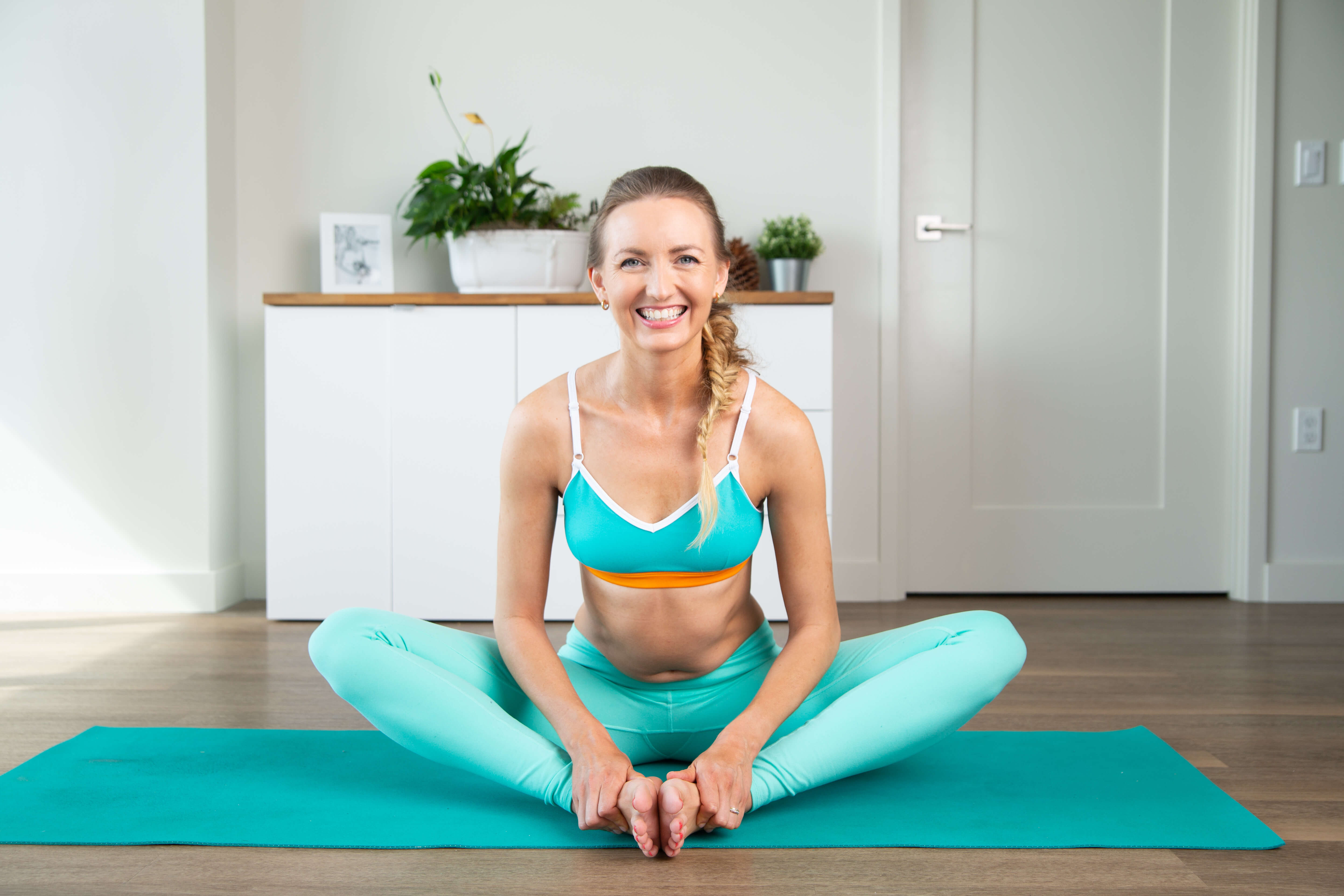
- Step 1: First start in Dandasana. Stack the head over the hips to keep the spine upright.
- Step 2: Inhale and bend both the knees to join the soles of the feet together. Exhale to push to the knees towards the floor.
- Step 3: Hold this yoga pose for 5-10 breaths, observing the stretch in the inner thighs around the abductors, hip flexors and hamstrings.
- Step 4: Exhale to release. Each time you try this pose, increase the number of breaths.
Variation: If it’s not easy to take the knees towards the floor, then use cushions on the floor where the knees would touch for added support. Or try an easy variation of the pose, by drawing the heels of both the feet away from the pelvis, creating a bigger diamond shape between the legs.
Benefits: This is one of the best yoga poses for athletes. By incorporating this pose in everyday yoga practice, the muscles around the hip region can be released. This pose helps with mobility and relaxation of the pelvis, back, thighs and buttocks. By releasing this muscle one can also reduce risk of injury.
2. Head to foot pose – Janusirsasana
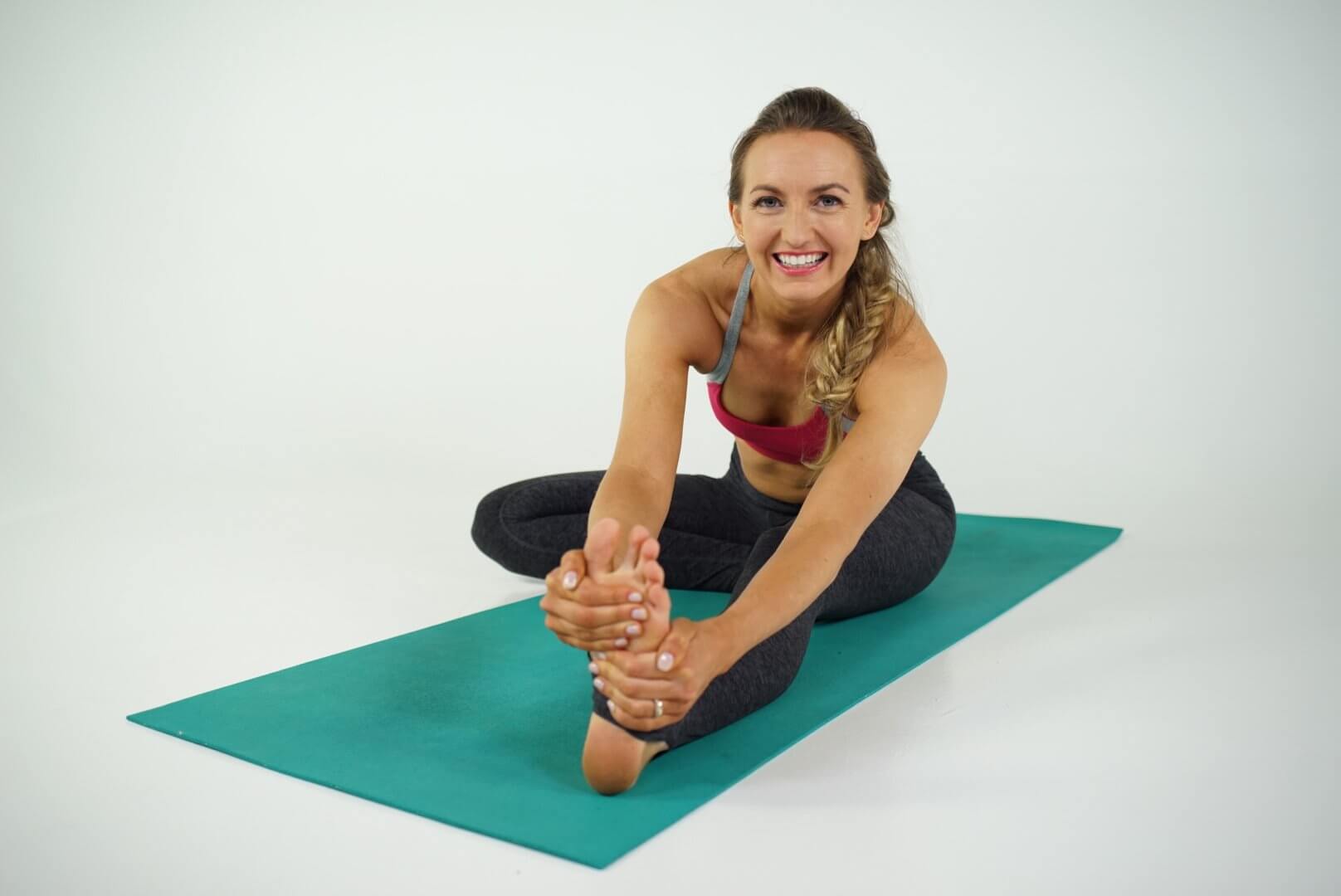
- Step 1: Start in Dandasana. Ensure that the spine is straight.
- Step 2: Bend the right knee so that the sole of the right foot can be placed on the inside of the left thigh.
- Step 3: Inhale and lift both the arms up, pointing the fingertips up. Exhale to fold forward, bringing the hands to the foot, ankle or shin. Flex the foot of the extended leg.
- Step 4: Ensure that the spine is long and you experience a stretch in the lower back as well as the back of the legs.
- Step 5: Hold this pose for 5-10 breaths. Focus on bringing the belly towards the thigh to ensure length in the back.
- Step 6: Inhale to lift the arms back up to come out of this forward fold. Exhale to release the hands down.
Variations: If it is too hard to reach the extended leg, then get a yoga strap. As you exhale, work your way forward on the strap to slowly increase the stretch in the spine, ensuring that you don’t round the upper back. A good variation for this pose is with a block or cushion under the sit bones. This will help with lengthening the back.
Benefits: This is one of the best poses to stretch out the hamstrings. Many athletes who complain of lower back pain or tight muscles in the legs can greatly benefit from this pose. This pose also helps stimulate the liver and kidney and can help with digestion.
3. Bow pose – Dhanurasana
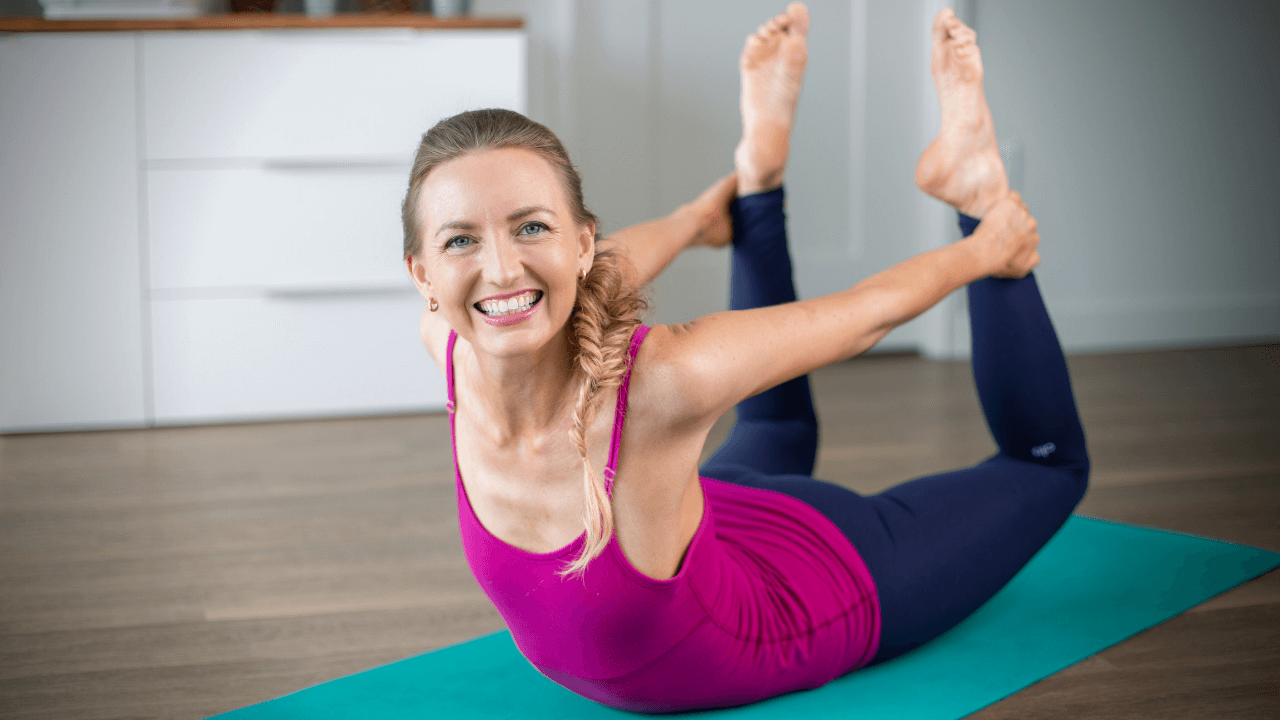
- Step 1: Start lying down on the floor, stomach facing down. Bend both the knees and reach the hands towards the feet, holding one corresponding foot at a time.
- Step 2: Inhale to expand the chest and lift the chin and chest off the mat. Exhale to push the tops of the feet into the hands, lifting the thighs off the mat.
- Step 3: Hold this pose and observe the subtle movement of the stomach against the floor as you get a gentle massage on the abdomen.
- Step 4: Exhale to let go of the feet slowly and return back to starting position.
Variation: If it is hard to reach the feet with the hands, then get a yoga strap around the ankles. You may also need a yoga strap in case it gets difficult to breathe in this pose.
Benefits: This pose is the perfect balance of strength and flexibility. It stretches the front of the body, while gently stimulating the abdomen. Regular yoga practice which incorporates this pose can help to keep the endocrine, digestive and excretory system healthy. This pose also helps to increase the flexibility of the chest region and strengthens the back body from the upper back to the buttocks.
Make your yoga practice 2x more potent in HALF the time (usually $47) FREE 👇
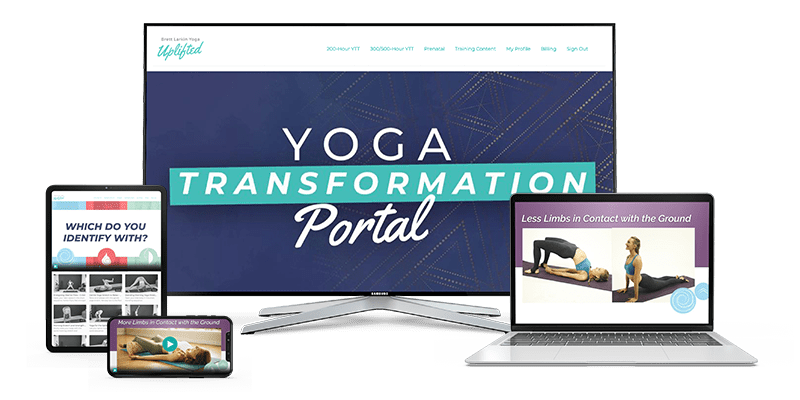
Make your yoga practice 2x more potent in 1/2 the time. FREE two-hour Yoga Transformation Portal (usually $47) [Claim it Free Here]

4. Tree pose – Vrikshasana
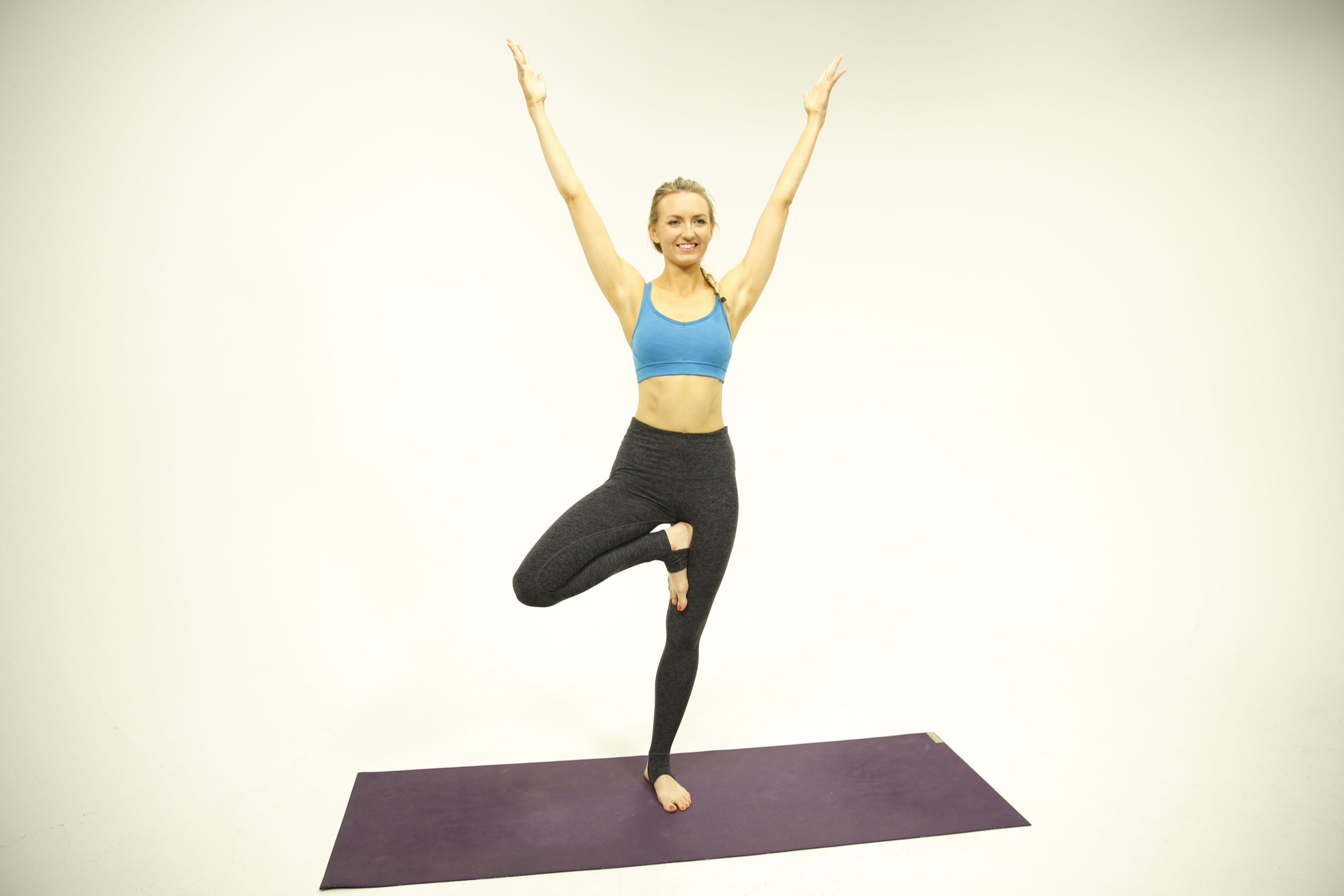
- Step 1: Start standing with feet hip-distance apart and arms on the hips. Keep your gaze steady at one point.
- Step 2: Inhale and lift the right leg up, stacking the shoulders directly over the hips. Exhale and bend the right knee to place the sole of the right foot on the inner left thigh, shin or ankle.
- Step 3: Inhale to join the palms together. Exhale to lift the palms up.
- Step 4: Balance in this yoga pose for 5-7 breaths. To release, inhale and point the right knee to the front. Exhale to release the leg down. Repeat on the other side.
Variations: If it is extremely hard to balance then try this pose next to a wall. Ensure that the body remains in the center by keeping both the hips in line with each other. Each time you try this pose, try to move away from the wall to reduce dependency. Just as athletes undergo sports training for better performance, better balance requires constant practice and training.
Benefits: Balancing poses allow a full body – mind experience. Yoga for athletes is as important for mental strength as physical strength. This pose helps with concentration as well as increased body awareness. It helps with strengthening the legs and functional core. Stillness in this pose can help calm the mind.
5. Warrior II – Veerbhadrasana
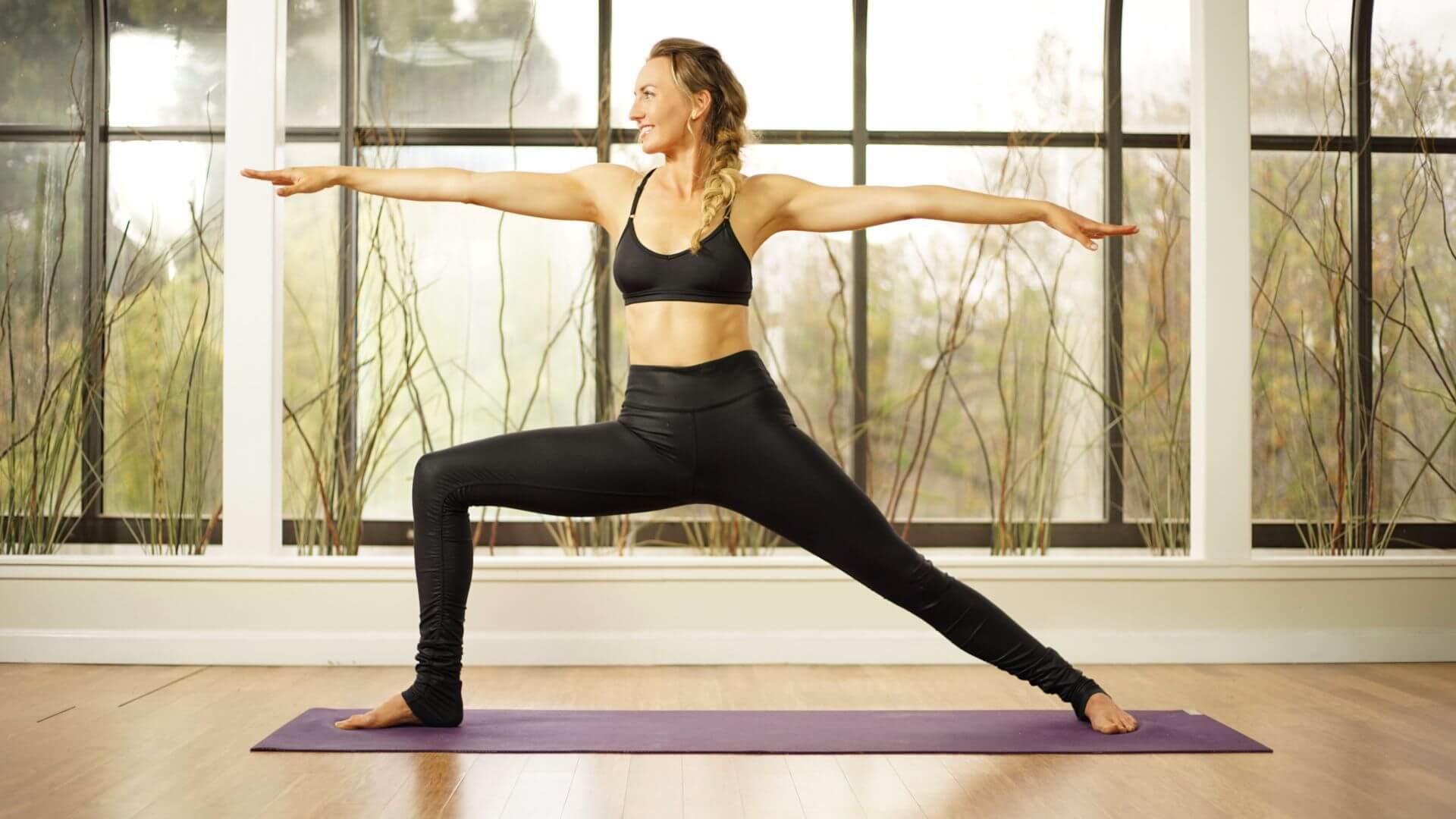
- Step 1: Start standing with the legs wide, facing the long side of the mat. Inhale to extend the arms out and turn the right toes to the right side, ensuring that the heel of the right foot is in line with the center of the left foot.
- Step 2: Exhale and bend the right knee till you feel a stretch on the back of the right thigh, keeping the right ankle directly over the knee.
- Step 3: Turn your head towards the right to look towards the right fingertips. Try to find a steady point above the right hand to gaze at.
- Step 4: Hold this pose for 5-10 breaths. To know if you can go deeper, exhale and widen the stance without losing the alignment of the right knee over ankle.
- Step 5: Inhale to straighten the leg. Exhale to bring the hands down and turn the toes back to face the front. Repeat on the other side
Variation: You can adjust the distance between the legs as per your individual range. More flexibility in the hamstrings will allow the legs to go wider. To balance better, start with a shorter stance.
Benefits: This yoga pose stretches the legs, groins, chest and shoulders. This pose is also good for stamina and helps to release excess tension from the pelvis. This pose is often used as part of a vinyasa because it enables one to build on both strength and flexibility.
6. Bridge pose – Setu Bandasana
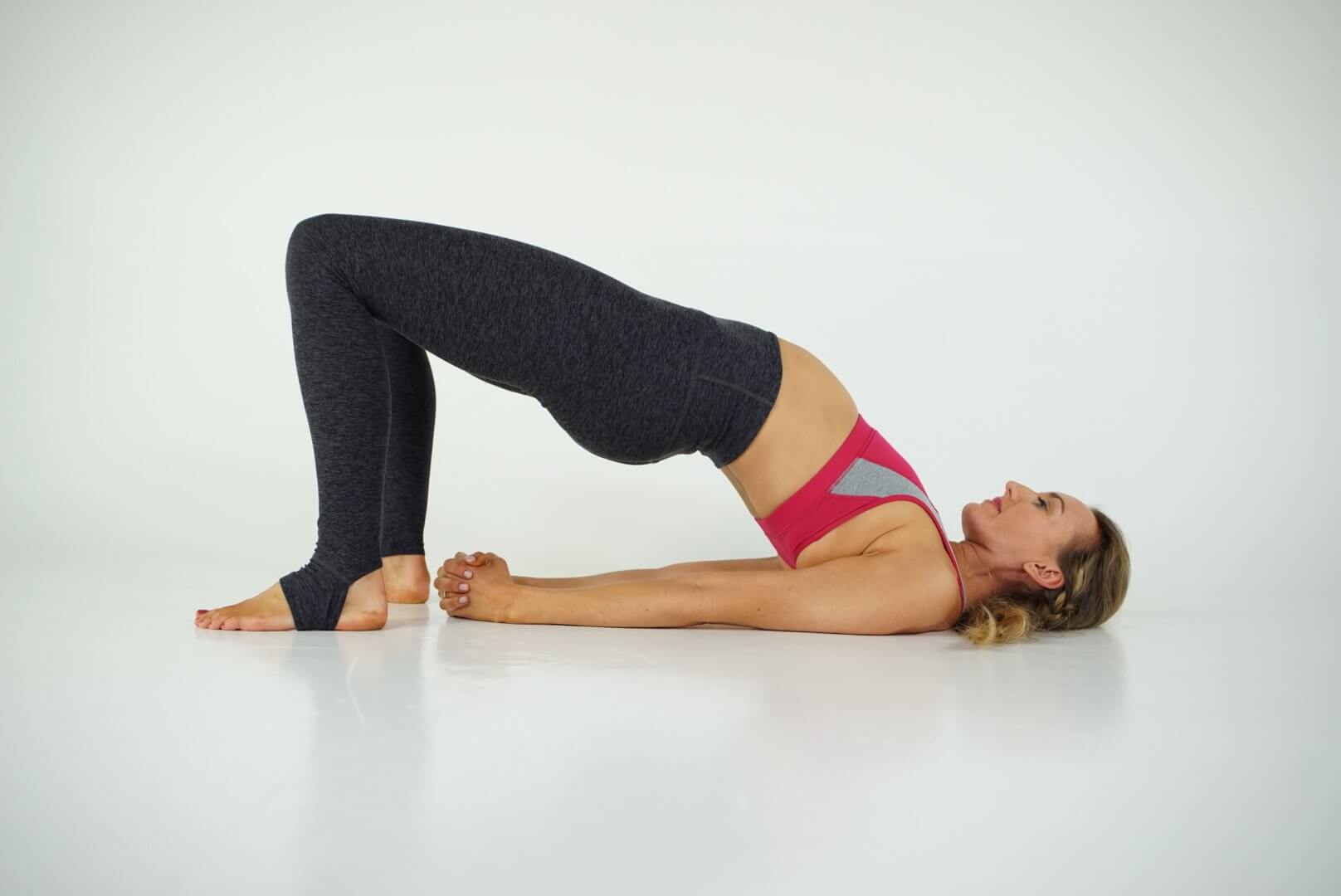
- Step 1: Start lying down on the back. Bend both the knees and bring the soles of the feet on the mat, hip-distance apart. Keep the arms by the side of the hips
- Step 2: Inhale and lift the hips up. Bring both the palms under the back and interlace the fingers.
- Step 3: Exhale to stay here and hold the pose for at least 5 breaths. Lift the center of the chest up to find a deep stretch in the front body. Exhale to make your way down to the starting position.
Variation: The way you hold this pose determines how much it helps with strength and flexibility. Use a block under the hips if you can’t stay in this pose for long without support. You can also keep the palms by the side of the hips if you can interlace them.
Benefits: This pose stimulates the vital organs while stretching out the intercostal muscles around the rib cage. This pose also strengthens the hamstrings, glutes and back.
7. Corpse pose – Savasana
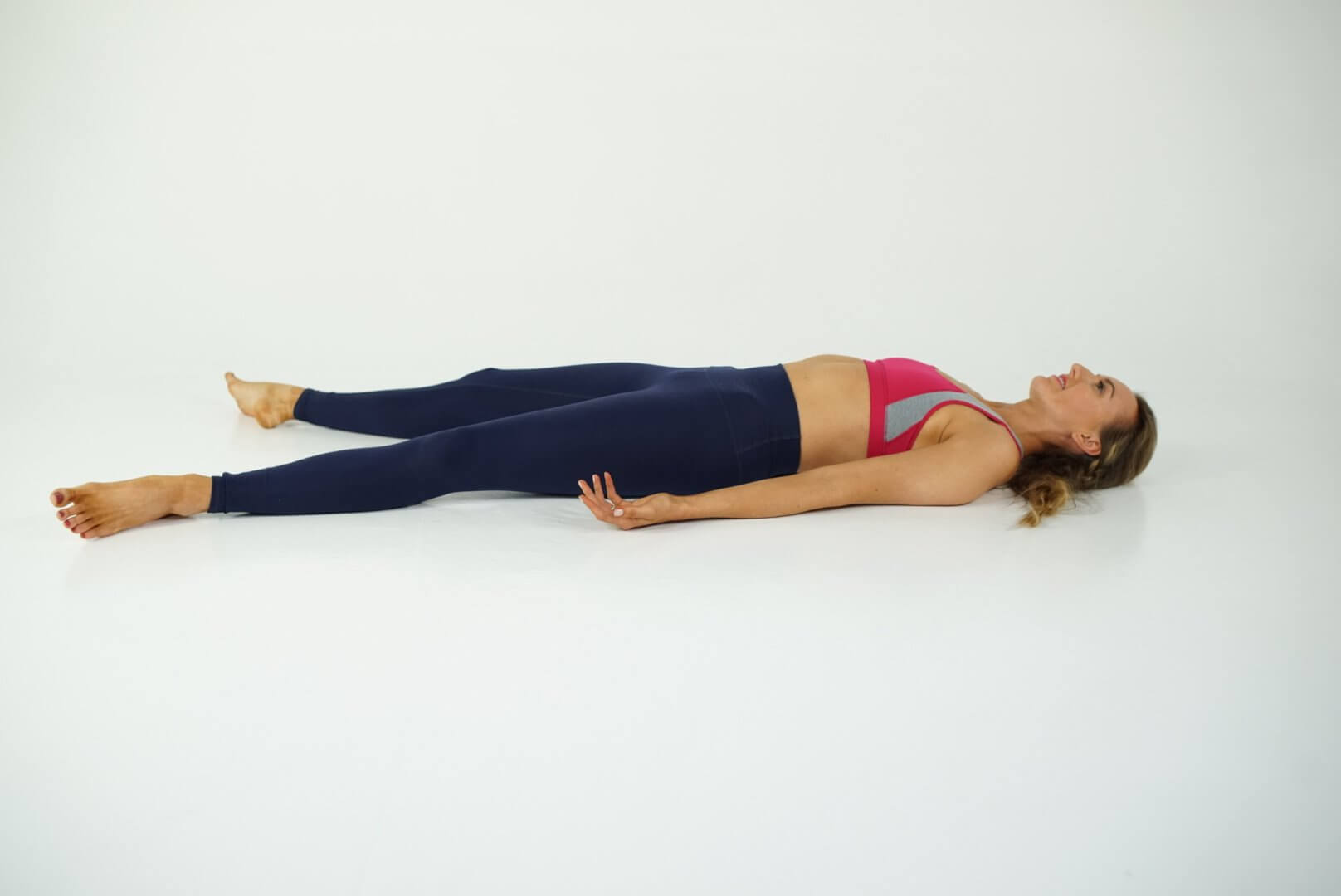
- Step 1: Start by lying down on the mat on your back. Take your feet as wide as the mat and turn the palms up. Close your eyes and observe the breath.
- Step 2: To release, start with small movements around the fingers and toes and then the rest of the body.
Variation: Place a pillow under the knee if this pose hurts your back.
Benefits: This yoga pose helps athletes calm the mind and relax the body. With proper training, emphasis should also be on mental relaxation apart from just physical practice. Many yoga teachers believe that this is one of the hardest yoga poses because a lot of work goes into stilling the mind.
Next Steps
- Check out my YouTube channel and find some yoga classes that you can try out for yourself!
- Download my Yoga Calendars for an at-home practice, guided by me on YouTube!
- Join Uplifted for exclusive content that you can access right from the app. Take a deep dive into your practice with me this year!
Experience 3 Training Videos from Inside My 200-Hour Online YTT

Find more yoga sequences by benefit.
YOU MIGHT ALSO LIKE
- Office Yoga: 10 Poses You Can Do Right Now
- Ayurveda Food Combining: The Key to Balanced Digestion
- How To Reduce Body Heat According To Ayurveda
- Yoga For Grief: 8 Yoga Poses For Support
- Yoga for Vata Dosha: Practice Poses and Tips
- Yoga for Pitta Dosha: Practice Poses and Tips
- Yoga for Kapha Dosha: Practice Poses and Tips
- Can We Do Yoga During Periods? Here’s The Yoga Philosophy
- Industry Expert Tips For Yoga Injury Prevention (+ Modifications)
- Affirmations And Yoga Poses For Gratitude
- Yoga For Piriformis Syndrome: 8 Poses To Relieve Pain
- Yoga For Self Love: A Practice for Healing, Growth, and Transformation
- Yoga For PCOS: Yoga Practice To Manage Symptoms
- How Yoga For Trauma Release Works (Uplifted Perspective)
- Yoga For Third Trimester: My Favorite Poses
- 10 Yoga Poses That Will Strengthen The Pelvic Floor
- Yoga For Nausea: 7 Yoga Poses For A Sore Stomach
- Yoga for Thyroid: 10 Poses For Relief
- Yoga For Endometriosis: 7 Poses for Pain Management
- Yoga For Fibromyalgia: A Sequence for Pain Relief
- Yoga for Burnout: A Sequence for Balance
- Yoga For Long COVID: How to Practice for Recovery
- 9 Yoga Poses For PMS For A Smoother Cycle
- Yoga For Emotional Release: 8 Postures For Peace
- Yoga For Fertility: 10 Yoga Poses For Fertility Support
- Yoga for Bloating: 9 Yoga Poses for Relief
- Yoga For Depression: 10 Poses For Emotional Relief
- 10 Yoga Poses For Period Cramps That Will Ease The Pain
- Yoga For Women: 10 Yoga Poses For Every Stage Of Life
- Yoga For Stress Relief: 10 Poses You Can Do Right Now
- Yoga for Seniors: 10 Gentle Yoga Poses for Older Adults
- Yoga For Arthritis: 9 Poses For Joint Pain Relief
- Yoga for Sciatica Pain: 10 Poses to Relieve Sciatica Pain
- Yoga for Sleep: 10 Poses to Do Before Bed
- Yoga For Athletes: 7 Poses For Strength, Flexibility and Stamina
Learn how to do 11 of the most popular yoga poses correctly. Free video + PDF download.










